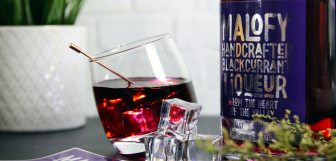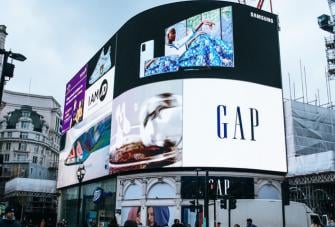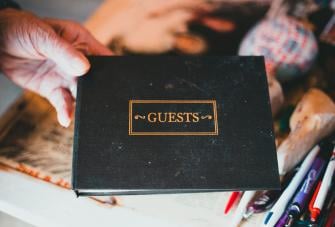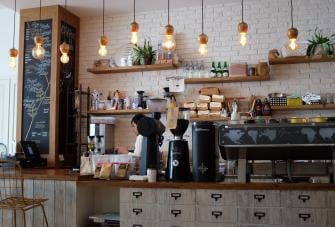What should liquor cost be in a restaurant: A guide for business owners
Running a successful restaurant involves juggling numerous factors, and one of the most critical aspects is properly managing your food and beverage costs. When it comes to alcoholic beverages, determining the appropriate pricing can be a challenging task.
In this comprehensive guide, we will explore the intricacies of liquor costs in a restaurant, providing valuable insights and strategies for business owners to optimise their profitability while keeping customers satisfied.
Understanding liquor cost
Liquor cost or pour cost refers to the expenses incurred by a restaurant to purchase alcoholic beverages such as spirits, wine, and beer. Calculating liquor cost is essential for maintaining healthy profit margins, as it directly affects the financial performance of your restaurant's sales forecasting.
On average, a good beverage cost percentage in the restaurant industry typically ranges between 20% and 30%, according to data from the National Restaurant Association [1]. However, it's important to note that this average can vary based on factors that will be discussed later in this blog!
How to calculate liquor cost
To calculate the average pour cost or the liquor cost for your restaurant, you can use the following liquor cost formula:
Liquor cost percentage = (Cost of alcohol sold / Total alcohol sales) x 100
- Cost of alcohol sold: This represents the total amount spent on purchasing alcohol for your restaurant.
- Total liquor sales: This includes the revenue generated from selling alcoholic beverages.
For example, if you spent $1,500 on alcohol and generated $5,000 in alcohol sales, your liquor cost percentage would be:
Liquor cost percentage = ($1,500 / $5,000) x 100 = 30%
A liquor cost percentage of 30% means that 30% of your alcohol sales revenue is spent on purchasing alcohol.
Factors affecting beverage costs
Several factors can impact the liquor cost percentage in your bar or restaurant, and understanding these variables is crucial for effective pour cost percentage management.
1. Beverage selection
The range of alcoholic beverages you choose to offer in your restaurant can significantly impact your liquor cost. Consider the range of choices available, from premium spirits and wines to well-known brands and house options. High-end liquors typically come with higher wholesale prices, which can also increase your overall beverage cost percentage.
Balancing your beverage selection is crucial. While premium options can attract connoisseurs willing to pay more, it's essential to provide value for price-conscious customers as well. Striking this balance requires careful consideration of your target audience and the image you want to project.
2. Pricing strategy
Your pricing strategy plays a pivotal role in determining your liquor cost. Are you pricing your draft beer and drinks primarily to cover costs while maintaining competitive prices, or are you aiming for higher profit margins? Striking the right balance is a constant challenge.
Restaurants with a premium image may choose to set higher prices on their alcoholic beverages to match the overall dining experience. On the other hand, casual dining establishments might focus on affordability, which means tighter control over liquor costs to remain within their restaurant budgeting strategy.
3. Inventory control
Efficient inventory control is essential for minimising liquor cost. Regularly monitoring your stock levels and tracking consumption helps prevent overstocking and understocking issues. Overstocking can lead to dead inventory, tying up capital unnecessarily, while understocking can result in missed sales opportunities.
4. Supplier relationships
Building strong relationships with alcohol suppliers can significantly impact your liquor cost. When you have a good rapport with your suppliers, you may be in a better position to negotiate for better deals, discounts, and favourable terms. Consistent communication with your suppliers can lead to cost savings over time.
Consider exploring partnerships with local breweries, wineries, or distilleries. Not only can this support the local economy, but it can also provide unique offerings that set your restaurant apart, potentially increasing the perceived value of your beverages.
5. Seasonal variations
Understanding and adapting to seasonal fluctuations in demand for specific beverages is vital. Different seasons and occasions can significantly affect the types of alcohol your customers prefer.
For example, during the summer, customers may lean toward lighter, refreshing cocktails and beers, while in the winter, they might opt for warm, comforting spirits. Being prepared for these changes in consumer preferences allows you to adjust your inventory accordingly, avoiding overstocking or running out of popular items.
6. Competition and location
The level of competition in your area and your restaurant's location can also affect your liquor cost. Restaurants in high-rent, urban areas might have to tolerate slightly higher liquor cost percentages due to the increased overhead expenses. In contrast, those in more affordable regions may have the flexibility to aim for lower liquor costs compared elsewhere.
Moreover, analysing your competition's pricing and offerings can provide valuable insights. It helps you determine how your liquor costs compare to others in your market and whether adjustments are needed to remain competitive.
7. Customer demographics
Understanding your customer demographics is fundamental. Different customer groups have varying preferences and expectations regarding alcoholic beverages. For example:
- Millennials may be more interested in craft beers and trendy cocktails.
- Baby boomers may prefer classic wine options.
- Young professionals might seek premium spirits.
Tailoring your beverage selection and pricing to match your primary customer base ensures that you're meeting their needs and maximising sales.
Take action and elevate your restaurant's efficiency!
One surefire way to streamline operations and gain better control over your liquor cost management is by investing in a state-of-the-art Point of Sale (POS) system. Our advanced POS systems offer real-time inventory tracking, sales analytics, and much more, tailored to the unique needs of your restaurant.
Strategies to optimise liquor costs
We've talked about understanding liquor cost and the factors that can impact it. Now, let's roll up our sleeves and get into some practical strategies for optimising your restaurant's liquor cost percentage. After all, who doesn't want to boost profitability while keeping customers happy?
1. Regularly review and adjust prices
Imagine this scenario: you've noticed that your premium cocktails aren't selling as well as you'd like. Take a closer look at your pricing. Are they too expensive for your target audience? Is there room to lower prices while still maintaining profitable?
Conversely, if you have a signature drink that's flying off the shelves, you might consider a slight price increase. Customers are willing to pay a bit more for something they love. The key here is data analysis. Keep an eye on your sales figures, and don't be afraid to make price adjustments when the numbers tell you it's necessary.
TOP TIP: Epos Now POS solutions allow you to readily spot anomalies or trends by simply accessing POS reports which are automatically created for you for smoother operations!
2. Implement an effective inventory system
Moving on to inventory management – this one can't be stressed enough. An efficient inventory system is your best friend when it comes to liquor cost optimisation. It's like having a GPS for your liquor supply.
Invest in a system that not only helps you track the amount of alcohol you have in stock but also provides insights into consumption patterns. You want to know which drinks are your best sellers, which ones are gathering dust on the shelf, and when it's time to reorder.
In the digital age, data is king. Leverage technology and data analytics to gain insights into customer preferences, peak sales times, and inventory management. Point of sale (POS) systems and data analytics tools can provide valuable information to help you make informed decisions.
By analysing sales trends, you can identify top-performing items and adjust your menu accordingly. You can also anticipate fluctuations in demand and adjust your inventory levels to prevent overstocking or shortages.
TOP TIP: Invest into an Epos Now's restaurant POS system to track all sales data in real-time and carry out inventory management automatically!
3. Train your staff for accuracy
Your bartenders and servers are on the front lines when it comes to controlling liquor costs. Ensuring they pour accurately and consistently is essential. Over-pouring even a small amount with each drink can add up over time.
Consider implementing a training program that focuses on precise pouring techniques and portion control. It's not about skimping on drinks; it's about ensuring that each customer gets exactly what they ordered and paid for. Plus, this helps create a consistent experience, which customers appreciate.
Think of it this way: training your staff to be meticulous not only helps control liquor costs but also ensures that every customer leaves with a smile, knowing they received value for their money.
4. Monitor beverage trends
Staying in the loop about current beverage trends is another potent strategy. The world of alcoholic beverages is continually evolving, with new cocktails and trends popping up regularly. Be in the know and adapt your menu accordingly.
Imagine this: The latest trend is craft cocktails with unique ingredients and presentations. By incorporating these trends into your menu, you not only attract customers looking for something fresh and exciting but also potentially increase the overall profitability of your bar.
Stay connected with the bartender community, attend industry events, and encourage your team to experiment and come up with innovative concoctions. Your menu will stay appealing, and customers will keep coming back for the latest exciting drink.
5. Menu engineering
Menu engineering involves strategically designing your menu to promote high-profit items and influence customer choices. By strategically placing and highlighting certain drinks, you can encourage customers to order beverages with higher profit margins.
For example, you can feature signature cocktails or wine specials prominently on the menu. Effective menu engineering can lead to increased sales of profitable items while improving the overall customer experience.
6. Implement sustainable practices
Sustainability is a buzzword in the restaurant industry, and it can also contribute to liquor cost optimisation. Consider eco-friendly practices that reduce waste and save money.
For example, using sustainable glassware and investing in durable, reusable bar equipment can lower your long-term costs. Additionally, recycling and repurposing ingredients can lead to creative cocktails while reducing waste. Sustainable practices can also be a selling point, attracting environmentally-conscious customers.
7. Implement beverage cost tracking software
Invest in specialized beverage cost tracking software that integrates with your POS system. These tools can provide detailed insights into liquor cost, inventory turnover, and sales trends. They can also help you forecast demand and streamline procurement.
The right software can significantly improve your ability to manage liquor costs efficiently. It can generate reports that break down your costs by category, helping you identify which types of alcohol are the most cost-effective and which may need adjustment..
8. Beverage garnishes and presentation
Enhancing the presentation of your drinks goes beyond aesthetics; it creates an experience that engages your customers on multiple levels. Imagine serving a classic cocktail in a beautifully etched crystal glass with a meticulously crafted citrus twist garnish. The moment a customer lays eyes on such a masterpiece, they not only anticipate a delightful taste but also perceive it as something special. This heightened anticipation can lead to increased satisfaction and a willingness to pay a premium.
Moreover, creative garnishes and glassware can align with your restaurant's theme or story. For instance, if you run a coastal-themed restaurant, using seashell-shaped glasses and beach-inspired garnishes can transport your patrons to a seaside escape.
This immersive experience not only justifies higher prices but also encourages word-of-mouth recommendations and repeat business. Therefore, investing in presentation is an investment in the overall dining experience, which can significantly impact your bottom line.
9. Evaluate the ROI of signature drinks
Signature cocktails and drinks can be a hit with customers, but they can also be costlier to prepare due to unique ingredients. Regularly evaluate the return on investment (ROI) of these signature drinks. If they contribute significantly to overall sales and customer satisfaction, they may be worth the higher ingredient costs.
Additionally, consider experimenting with seasonal variations of these signature drinks. For example, if your restaurant features a popular summer cocktail, explore how you can modify it for the winter season, using ingredients that are readily available and cost-effective during that time.
This approach allows you to maintain customer interest while optimising your costs. Remember, a well-executed signature drink not only enhances your brand's identity but can also become a reliable source of revenue, making it a valuable asset to your business.
We've journeyed through the fundamentals, from calculating liquor cost percentages to uncovering the factors that influence them. You've learned about the importance of pricing strategy, efficient inventory management, fostering supplier relationships, and staying ahead of seasonal shifts in customer preferences. Armed with these insights, you're well-prepared to navigate the world of liquor cost management.
But remember, knowledge alone is not enough; it's the application of this knowledge that truly matters. The strategies we've discussed, from tracking beverage costs to enhancing presentation, offer practical ways to optimise your liquor cost and boost your restaurant's bottom line.
So, here's to raising a glass – not just to great drinks, but to a profitable and thriving restaurant. By implementing these strategies and staying adaptable in an ever-changing industry, you'll not only maintain the integrity of your business but also continue to delight your customers.
Don't let outdated technology hold you back. Take action today and discover how our POS systems can revolutionize your restaurant's operations.
Fill out the contact form below to get more information about our POS solutions and how they can drive your restaurant's success.



